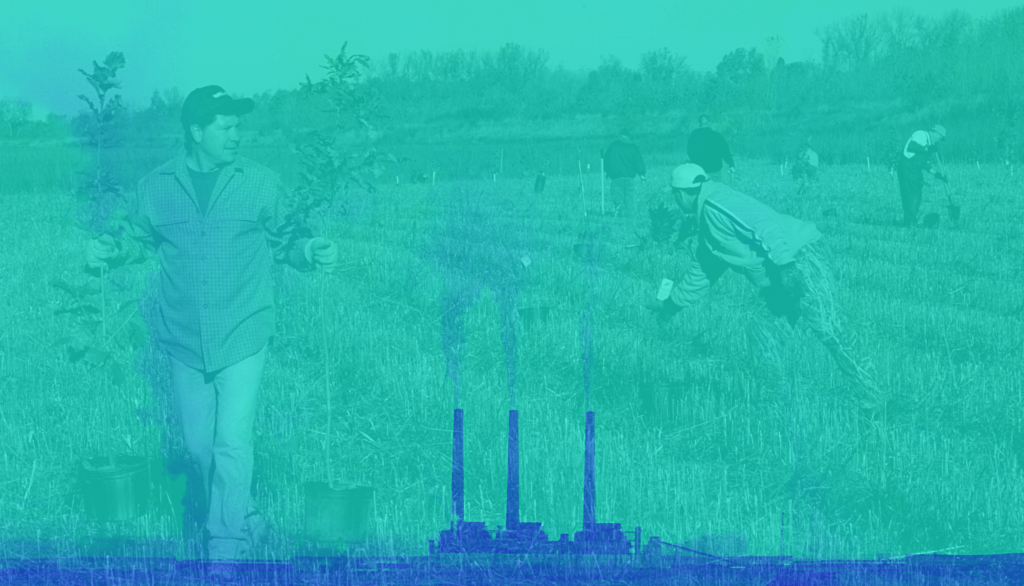Voluntary carbon market standards promising tonne-for-tonne compensation and exact measurement of impact are attempting to square the circle, argues Gilles Dufrasne. One solution is to drop offsetting claims and offer credits as financial contributions to climate action.

(Photos by Steve Hillebrand, Pixnio and Pixource, Pixabay)
Last week marked the closing of the public consultation on quality criteria for carbon credits by a new governance body for the voluntary carbon market: the self-proclaimed “Integrity Council” for the Voluntary Carbon Market. This body, like the market, is itself “voluntary”, in the sense that it is not dependent on governments. It, therefore, faces the same challenge as the rest of the market-based system: providing credible quality criteria that benefit the climate without falling prey to the wider forces pushing for cheap credits.
While demand for low-quality credits is possibly dropping as a result of the increased public scrutiny that carbon markets are facing, there is continued demand for credits that appear to be of high integrity, at the lowest possible cost. This explains why low-quality credits from major standards continue to be purchased and advertised, because buyers are satisfied to be able to hide behind the good reputation of the certifiers.
This is the challenge that ICVCM is facing. It must establish high-integrity criteria that will do more than merely put low-quality credits through the spin cycle of the greenwashing machine. Since the Integrity Council’s inception as the Taskforce on Scaling-Voluntary Carbon Markets (later aptly rebranded to focus on integrity rather than scale), the initiative has emphasised the need to improve quality.
So far, the proposed ICVCM criteria, if applied in full, would likely exclude virtually all carbon credits currently on the market from eligibility. This raises a broader question about the state of the market. Some have argued that this demonstrates the ICVCM’s “purist” approach to integrity, making it irrelevant in the real world, while others concluded that this was proof that today’s market is full of junk carbon credits and that existing standards have failed at their mission.
Tonnes of trouble
As with many things, the truth lies somewhere in-between. Perhaps the lack of quality supply is not due to incompetence on the part of the standards, but from an attempt to achieve the impossible. By building a system on the promise of tonne-for-tonne compensation and exact measurement of impacts, standards have been attempting to square the circle. Pushed by private companies seeking a cheap way to boost their green image, standards have tried to build systems to generate carbon credits in sectors that were often in most need of finance, like nature conservation, regardless of the suitability of these sectors for generating carbon credits.
This is one of the points where the market goes wrong. The level of uncertainty in quantifying beneficial impact, and guaranteeing this over the long term, as well as the difficulty of determining whether the credit created additional benefits that would not have occurred otherwise, make it virtually impossible to issue high-quality credits in most economic sectors. Many standards have preferred to ignore this reality and focus on attracting finance to carbon credits. How much of this finance ultimately serves climate action continues to be another issue weighing on the credibility of the system.
Furthermore, there is a risk that carbon markets create a race to the bottom when it comes to integrity, as low-quality credits tend to be cheaper. Flagging the co-benefits of some projects, for example with specific tags in a carbon credit registry, can help mitigate this risk. Some companies are willing to pay more money for credits that have such co-benefits. But this is not an absolute rule, and many companies continue to focus exclusively on price, which creates demand for the lowest quality credits.
Moreover, the fact that corporations and other actors, such as tournament organisers, are (ab)using carbon credits for purposes for which they were not intended – such as to make “net zero” claims before all preventable emissions have been eliminated – provides the voluntary carbon market with another huge credibility issue.
Setting off on a new path
Although highly complex and not yet finalised, the ICVCM criteria underscore how difficult it would be for standards to truly limit credit issuance to projects that can generate carbon credits good enough to be used as offsets.
Existing standards and market actors are mostly responsible for creating this problem, as most of them vocally advocate compensation and offsetting by companies. Switching to an alternative claims system that does not involve tonne-for-tonne compensation would help solve some of the technical issues faced by the ICVCM, including those surrounding double counting, permanence or additionality.
In the absence of standards taking the lead on this front, it would be wise for the ICVCM to step into this territory. Until it starts taking claims more into account, the ICVCM will find itself in the impossible position of trying to adopt criteria that both ensure high-quality offset credits and safeguard some significant level of supply. Given the current market structure, where cheap renewable energy and avoided deforestation projects largely dominate supply, this task will inevitably fail. Rather than marketing credits as offsets, voluntary market actors should promote the idea of financial contributions to climate action, getting rid of the concept of tonne-for-tonne compensation which implies an unrealistic level of precision in measuring impacts. This would set the bar at a more realistic level than what is needed for “offsetting” credits and would encourage continued climate finance flows to projects and countries that most need it.
This does not mean that we should do away with key quality criteria such as permanence and additionality. Instead, we can approach these with a more realistic aim. For example, requiring minimum storage of around 100 years, while acknowledging that this is not permanent, instead of unrealistically claiming that temporary storage can compensate for the emission of greenhouse gases which have been buried in the ground for millions of years and will remain in the atmosphere for centuries.
Until then, standards will continue to attempt the impossible by issuing carbon credits that supposedly represent a full tonne of CO2, even in sectors where it is impossible to guarantee impacts at that level of detail.






